 .A shared final activity..
.A shared final activity..
Age:
8 to 14 years.
Aims:
* To do an activity with the pupils of the six partner schools to round up the project.
* To show how an activity can propose many challenges even with the aid of a calculator.
* To study the properties of multiplication.
Materials:
Worksheet, pencil and calculator.
Main part:
The pupils are asked to find the solutions to various questions using their calculators with the condition that in each question they cannot use the same number more than once.
-
The result of the biggest possible multiplication ___ ___ ___ x ___=
-
The result of the biggest possible multiplication ___ ___ x ___ ___=
-
The result of the biggest possible multiplication ___ ___ ___ x ___ ___ =
-
The result of the biggest possible multiplication ___ ___ ___ ___ x ___ ___=
-
The result of the smallest possible multiplication___ ___ x ___ ___=
-
The result of the smallest possible multiplication ___ ___ x ___ ___ ___=
-
An odd number being the result of the biggest possible multiplication ___ ___ x ___ ___=
-
An odd number being the result of the biggest possible multiplication ___ ___ ___ x ___ ___ =
-
An odd number being the result of the smallest possible multiplication ___ ___ x ___ ___=
- An odd number being the result of the smallest possible multiplication ___ ___ x ___ ___ ___=
In Barcelona:
Escola Sadako did this activity with all its pupils from 8 to 13 years old.
Here are some photographs showing the pupils at work followed by the results they achieved:
10 and 11 years old
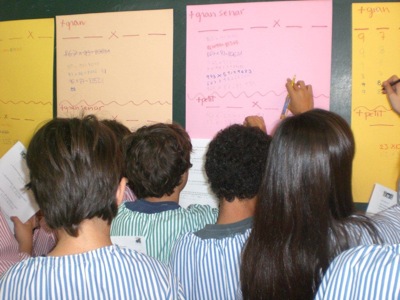
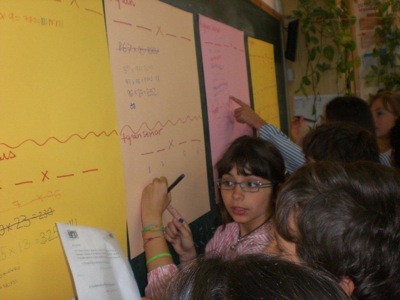
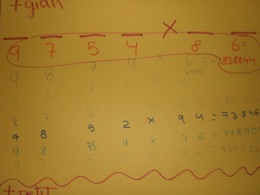 .
.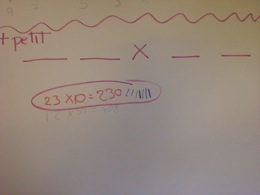 .
. 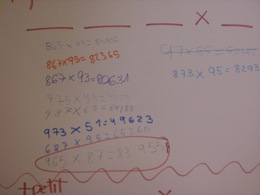
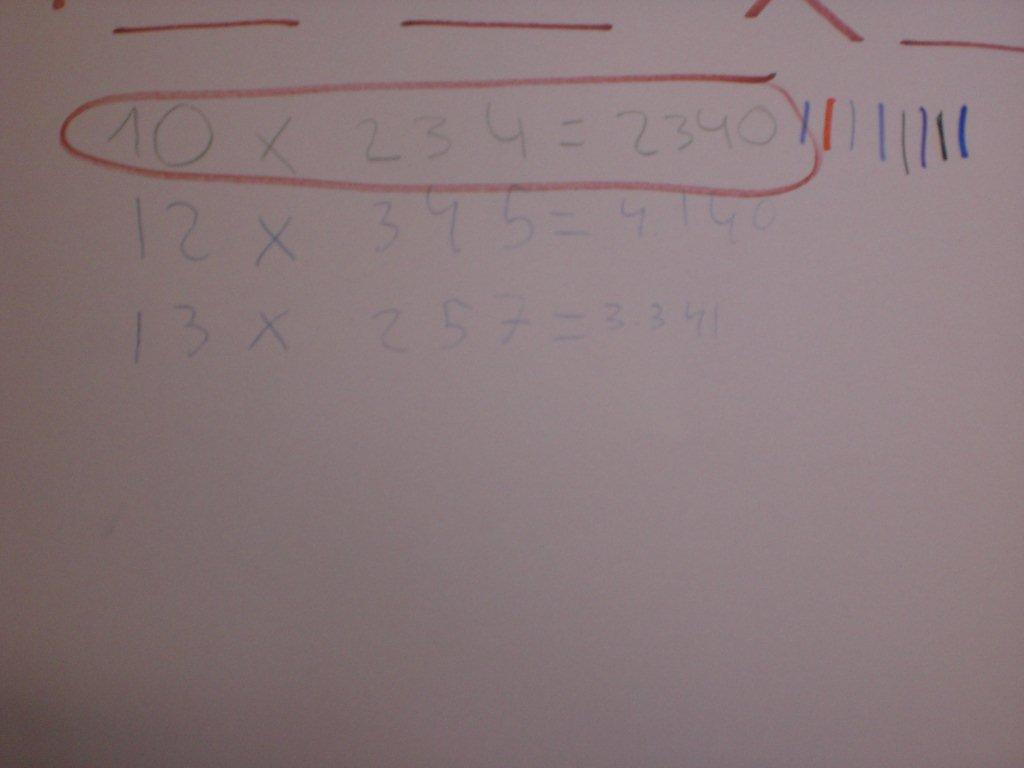 .
. 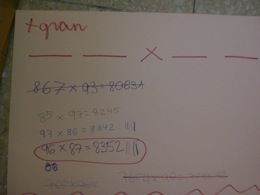 .
.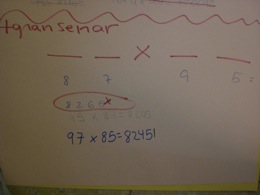
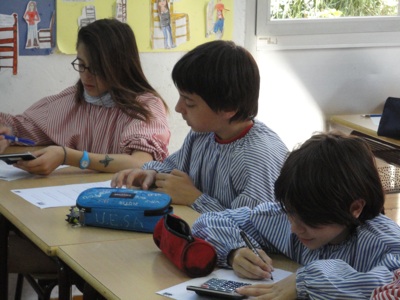 |
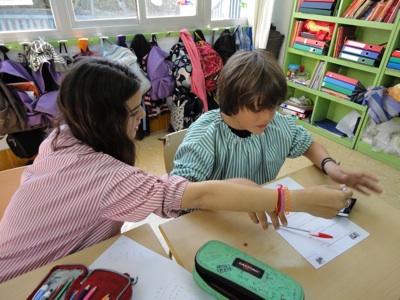 |
 |
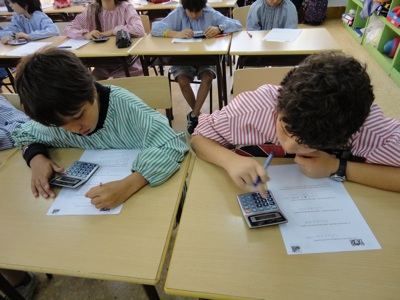 |
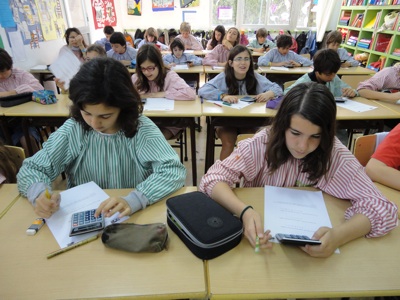 |
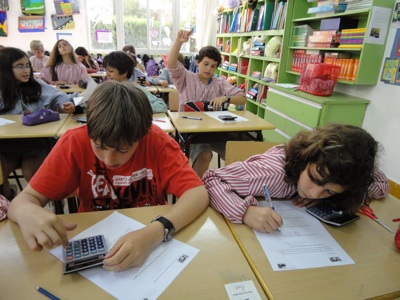 |
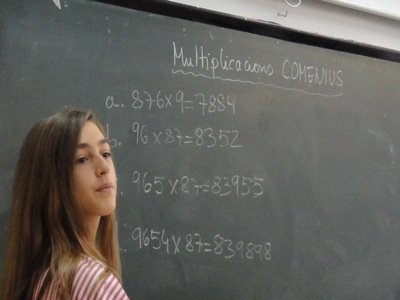 |
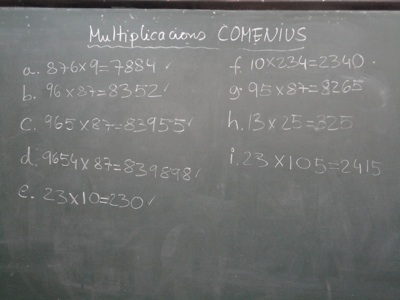 |
12 and 13 years old
These pupils had to do the activity in English and they were asked to describe the strategies they used to solve the different problems.
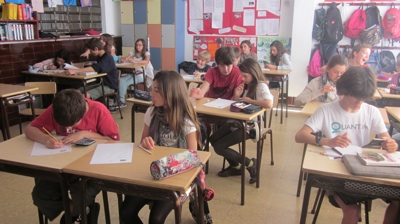
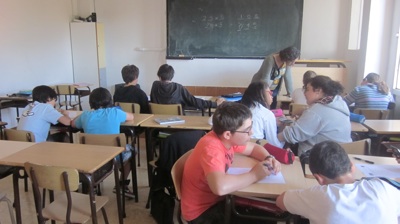
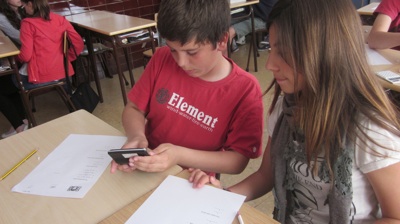
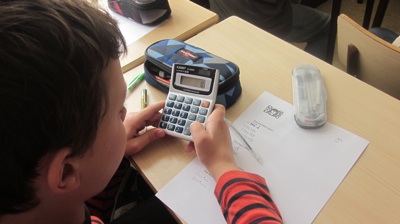
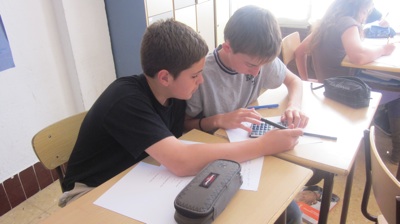
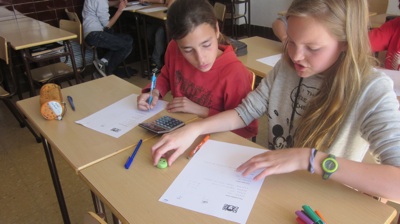
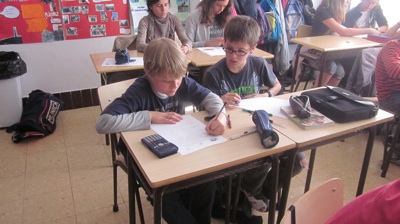
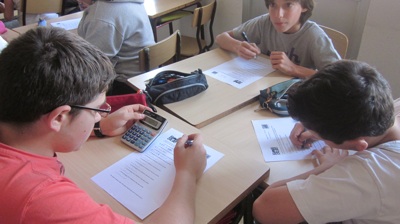
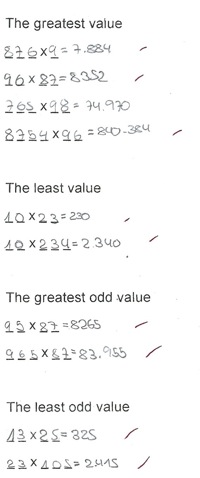
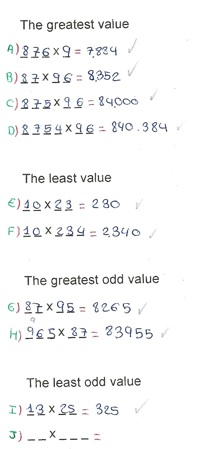
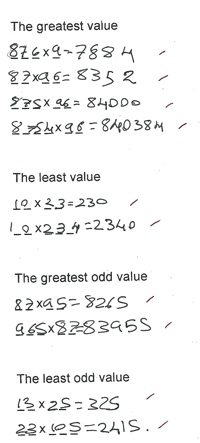
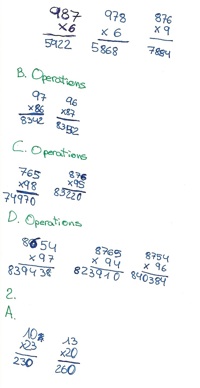
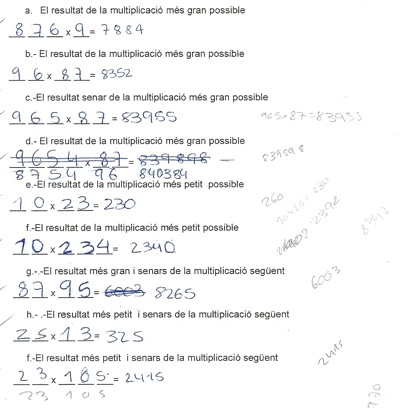
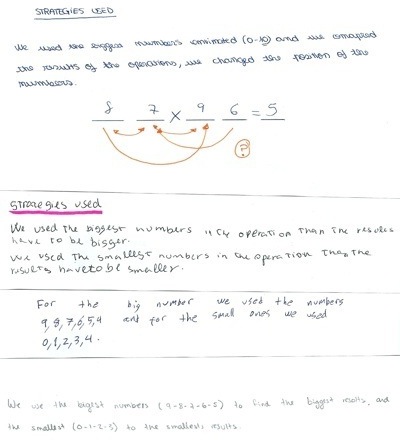
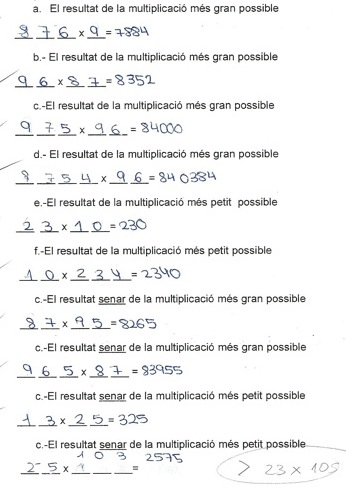
Click here to see an enlarged version of the image

Click here to see an enlarged version of the image
In Eleftheroupoli:
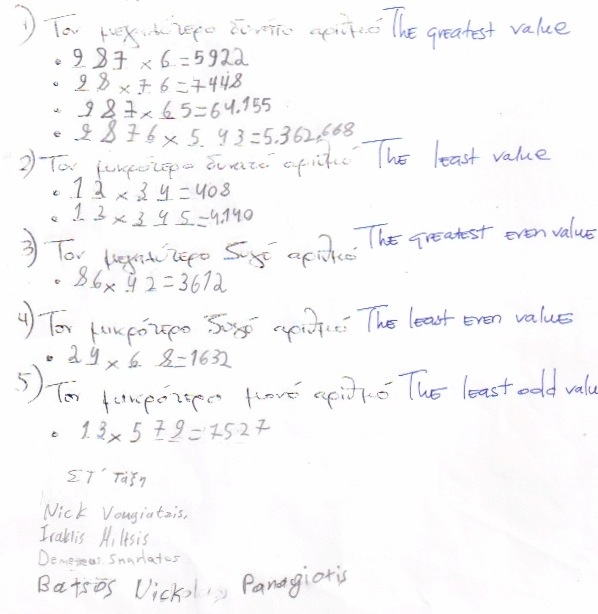
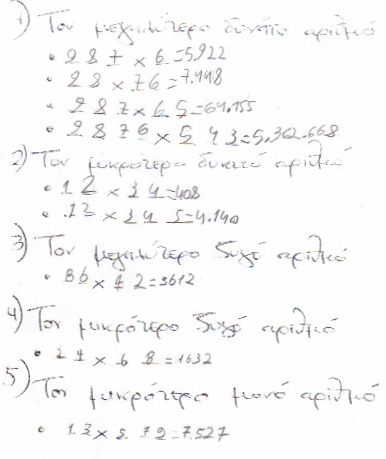
In Brindisi:
The activity was given to the pupils of 9 / 10 years. The pupils were divided into groups and they were given 30 minutes to do the task. Finally results were collected on the blackboard. Each pupil was able to compare, reflect and express his doubts about the results. To use the calculator makes the game interesting, fun and easy. We searched for a title to this activity and students especially liked playing with words. In Italy we usually call someone who has weird thoughts: ”You give numbers!”. It's the same as “You're crazy!”. So they all agreed that a good title could be: " GIVE THE NUMBERS ".
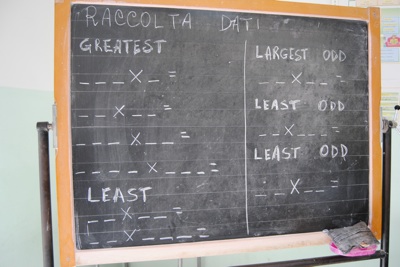 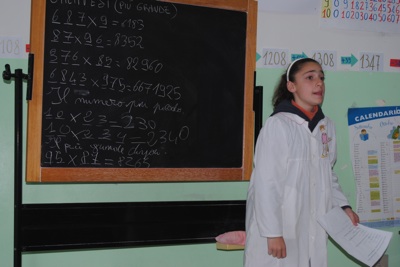 |
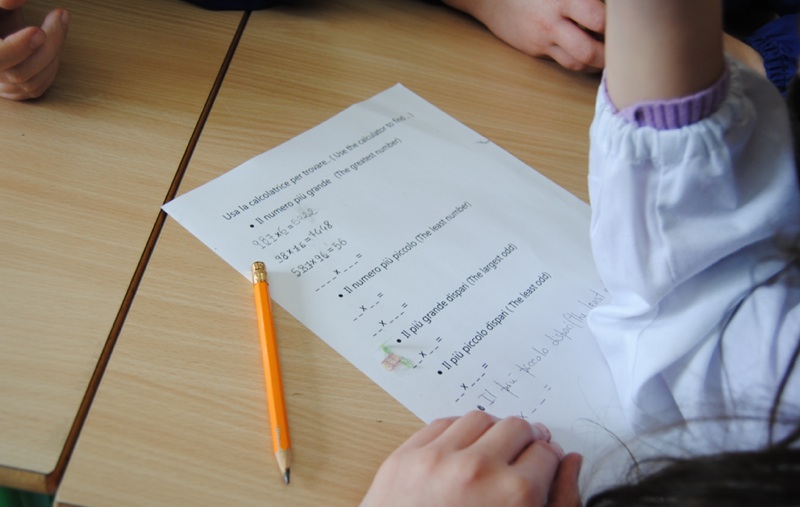 |
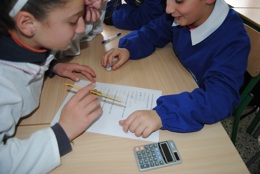 . .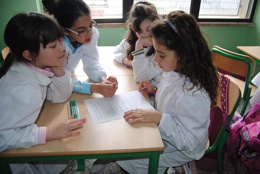 . .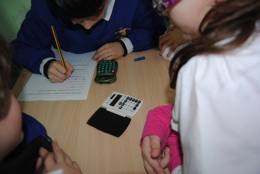 |
In Karlstad:
We did it in year 2 (8 years old), 4 (10 years old) 5 (11 years old), 6 (12 years old). All the children liked it very much. They all worked in pairs. With the younger children we taught them how to use the calculator. We repeated the word odd comparing with even. Then they started to test and they were very good at it. Many of the oldest pupils got it right from the beginning. When we went through the results, they had to read load the numbers they got. The highest number was difficult for the youngest. We talked about how to think to get the odd number. It was great to do an exercise in so many classes and compare the result.
In Portel:
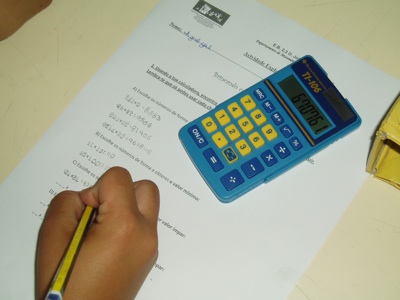 |
|
In Karaman:

